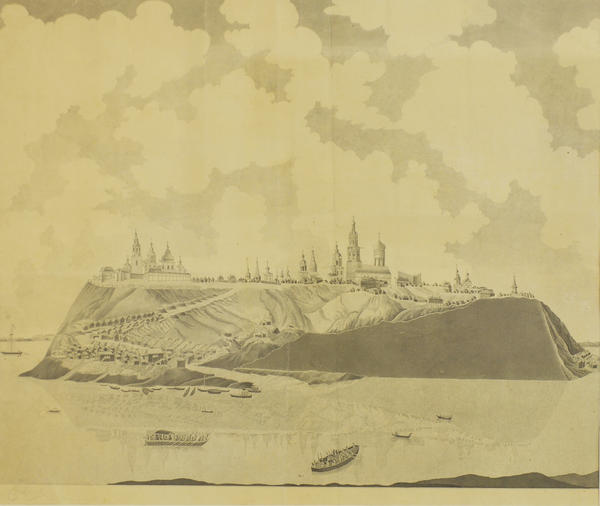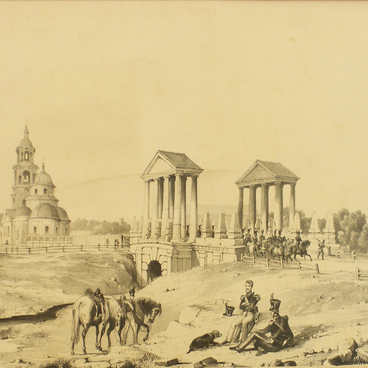The drawing of Sviyazhsk, which is on view here, was made by Lieutenant Colonel Alexander Svechin during a two-year expedition in cities of the Volga region. The expedition was ordered by Empress Catherine II and started off in 1763. Svechin’s primary task was to look at the local forests, see if they had tree species suitable for shipbuilding, and collect information concerning the region and its population. Svechin and his assistants used a camera obscura, i. e., a pinhole camera with a lens, made drawings of the areas.
Sviyazhsk
Время создания
1765 (?)
Размер
47,2x63,7 cm
Техника
dot and hatch drawing
Выставка
0
Открыть в приложении#1
Alexander Svechin
Sviyazhsk
#8
#9
The resultant drawing with a view of the island was completed by artist Mikhail Makhayev. This picture of Sviyazhsk is now deemed to be very rare.
#10
The drawing represents a panorama of the 18th century Sviyazhsk. The city was founded on an island by Ivan IV in 1551 as a military outpost essential for the conquest of Kazan. A dismantled fortress was brought from Uglich and, according to historian Nikolai Karamzin, to the surprise of local people, Sviyazhsk was built in just four weeks. At that time, this was the fastest ever construction of a full-scale city in Russian history.
#11
By the end of the 16th century, there were a few churches on the island (Trinity Church, Virgin Mary Nativity Church, and Sergius of Radonezh Church), two monasteries (Assumption Monastery and Trinity and Sergius Monastery), and a nunnery (John the Forerunner Convent).
#12
At its peak, Sviyazhsk had more than four thousand population. The city was divided in two parts: the upper city and fortress and the lower suburb around. The fortress was inhabited by military servicemen, administrative officers, and priesthood; the suburb population included craftsmen, traders, and rank and file citizens, mostly involved in agriculture. It was also a marketplace where fairs were arranged in summer and autumn.
#13
Gradually, the administrative and craft centres moved from Sviyazhsk to Kazan, and the place became increasingly quiet, turning into a monastery town by the 18th century.
#7
In the 20th century, Sviyazhsk hosted several penitentiaries: a children’s forced labour reformatory and later a penal colony where 5,000 convicts died, according to approximate assessment. The Assumption Monastery accommodated a psychiatric clinic for nearly 40 years.
In the 1990’s, Sviyazhsk revival began. Religious facilities and historic sites are being restored now.
In the 1990’s, Sviyazhsk revival began. Religious facilities and historic sites are being restored now.
читать дальшескрыть
00:00
00:00
1x
Sviyazhsk
Время создания
1765 (?)
Размер
47,2x63,7 cm
Техника
dot and hatch drawing
Выставка
0
Открыть в приложении
Поделиться



